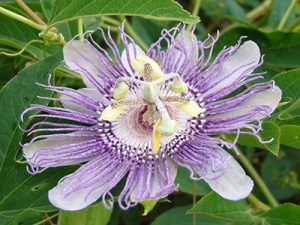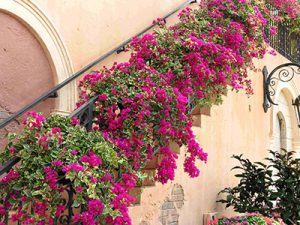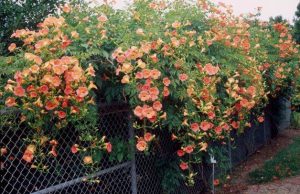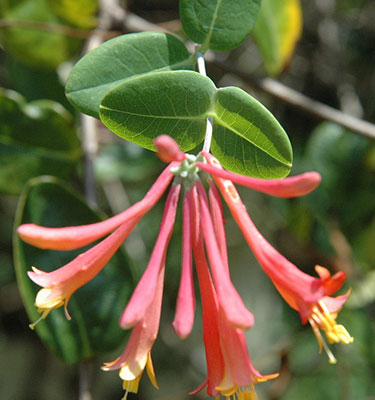Low-Maintenance Vines
Vines are so versatile! Vines can be trained to grow on walls, fences, trellises, archways, and even trees. Keep reading to learn about some vines that require minimal watering and care in Sarasota County.
Note: The following information is adapted from the Florida-Friendly Landscaping™ Plant Guide.
Legend
Apart from the information presented in the table, the following features will be highlighted under each plant’s picture.
Light
 : At least 6 hours of full sun
: At least 6 hours of full sun
 : 2-4 hours of full sun per day
: 2-4 hours of full sun per day
 : Full shade
: Full shade
Perks
 : Attracts pollinators
: Attracts pollinators
 : Attracts birds
: Attracts birds
 : Edible parts*
: Edible parts*
Geography
 : Native
: Native
 : Non-native
: Non-native
Vines
Purple passionflower (Passiflora incarnata)






| Height | 5 to 10 feet |
| Growth Rate | Fast |
| Hardiness | 7A to 11 |
| Light Requirement | Full sun |
| Salt Tolerance | Medium |
| Drought Tolerance | High |
| Soil Preference | Tolerates wide range of soil pH (4.5-8.0); medium-drained |
| Comments |
|
Read more here.
Crossvine (Bignonia capreolata)







| Height | 1 to 50 feet |
| Growth Rate | Fast |
| Hardiness | 6A to 9B |
| Light Requirement | Full sun to full shade |
| Salt Tolerance | Medium |
| Drought Tolerance | High |
| Soil Preference | Acidic to slightly alkaline (4.5-7.2), medium to well-drained |
| Comments |
|
Read more here.
Bougainvillea (Bougainvillea spp.)





| Height | 0.5 to 0.75 feet |
| Growth Rate | Fast |
| Hardiness | 9B to 10B |
| Light Requirement | Full to partial sun |
| Salt Tolerance | Medium |
| Drought Tolerance | High |
| Soil Preference | Acidic to slightly alkaline (4.5-7.2), sandy loam, well-drained |
| Comments |
|
Read more here.
Trumpet creeper (Campsis radicans)







| Height | 1 to 40 feet |
| Growth Rate | Fast |
| Hardiness | 4A to 10B |
| Light Requirement | Full sun to full shade |
| Salt Tolerance | Low |
| Drought Tolerance | Medium |
| Soil Preference | Tolerates wide range of soil pH (4.5-8.0); medium-drained |
| Comments |
|
Read more here.
Coral honeysuckle (Lonicera sempervirens)







| Height | 1 to 15 feet |
| Growth Rate | Fast |
| Hardiness | 4 to 10 |
| Light Requirement | Full sun to full shade |
| Salt Tolerance | Low |
| Drought Tolerance | Medium |
| Soil Preference | Slightly alkaline; clay; acidic; loam |
| Comments |
|
Read more here.
If you want to learn about other low-maintenance plants for your landscape, read the rest of our Low-Maintenance Landscaping blog series.
*Although we discuss edibility in this blog, UF/IFAS Extension Sarasota County is not responsible for any illness or injury associated with foraging. Be aware that some plants may have been treated with pesticides and are not fit for human consumption. Always exercise caution.
 0
0
